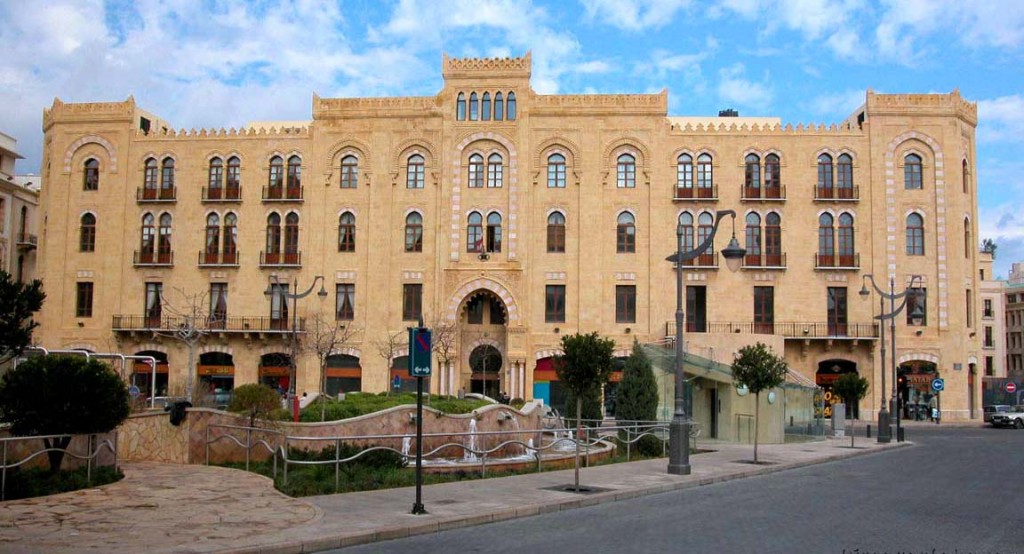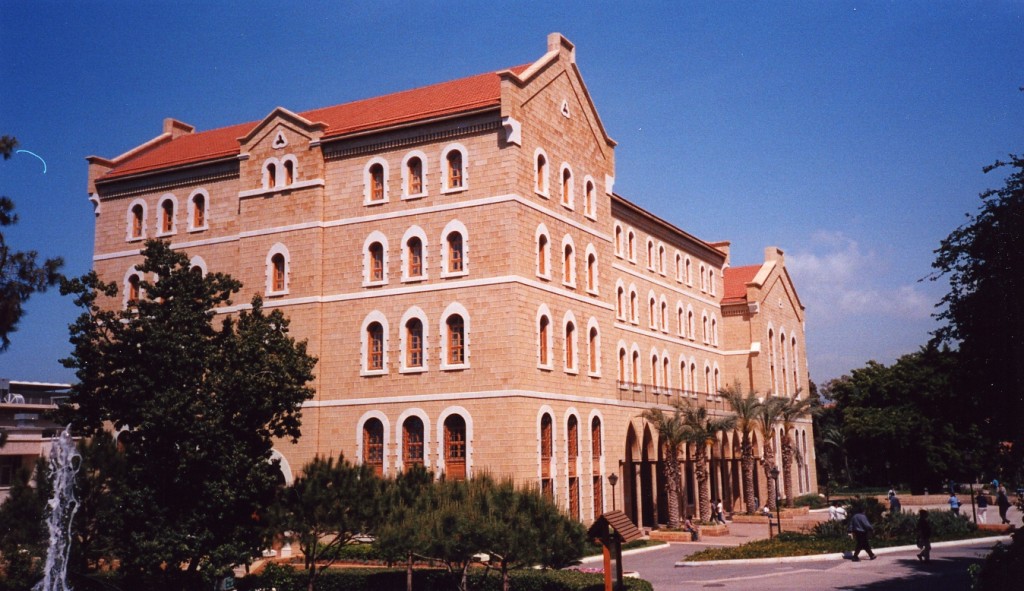By Duncan Grimm ’15
Thursday, February 14, at the Smith House, Trinity alumna Betty Anderson ’87, Associate Professor of History at Boston University delivered a well-attended lecture on Beirut, Lebanon’s capital city. Presented by the History Department, the International Studies Program, and the Co-Curricular Initiative on Cities, Anderson described how a minor city on the Mediterranean shore became a major trading hub and hotbed of learning throughout the latter half of the nineteenth, and majority of the twentieth centuries, reinvigorated recently in the decades following the Lebanese Civil War.
Today, Beirut is Lebanon’s largest port, responsible for much of the goods that pass in and out of the country. The role of education in this extraordinary urban growth is not lost on Professor Anderson, and is addressed in her 2011 book The American University of Beirut: Arab Nationalism and Liberal Education. Initially seeking to uncover how students of AUB became politicized, Anderson soon discovered that the story of the University lay in Protestant missionary tradition and international intrigue between European nations and the Ottoman Empire.
Beirut has been rebuilt significantly since the nearly sixteen-year Lebanese civil war (1975-1990) which left the downtown bleak and deserted. The rebuilding program has put Lebanon into enormous debt, but the city is no longer the ghost town it was in the years after the war, and has once again become a thriving port and educational powerhouse, just as it was at the turn of the century. Because of education, the city had a unique vibe separate from surrounding cities, and has since recovered this aspect of its character.

This vibe has its roots in the forming of both Beirut’s educational and economic bases in the nineteenth century. To put the growth in perspective, in 1800 the city was home to 6,000 people, while in 1900 the population had reached 120,000. Beirut became part of the Ottoman desire to “defensively modernize,” improving both military and educational institutions to European standards to stave off Europe itself. Part of this shift was economic, the Europeans wanted to be able to get the raw materials out of the Middle East, notably cotton and silk, a trade which the French involved themselves by infiltrating Mount Lebanon and started factories and invested in Mulberry trees between the 1820s and 1840s–the economy was French-dominated.
By the 1850s however, native Lebanese began to involve themselves in this new economy, and the combined activity of the French and native Lebanese increased trade to such a degree that a better port was needed. The French endeavored to improve the port facilities over the second half of the 1800s, and it is here where education comes in, for it was in Beirut that missionaries started to collect. Driven by the papacy, French missionaries for centuries had a long standing presence in the region preaching Roman Catholicism, and increasingly in the eighteenth and nineteenth centuries, attempted to reform the Catholic Maronites.
The fundamental shift however, began in 1820 with the arrival of American missionaries from the American Board in Boston. They knew nothing about the region except from their bible studies. Targeting “nominal” Christians, or those of non Protestant denominations, they hoped to peak Muslims’ interests. Having no conception of local culture or even Arabic, the first missionaries discovered a completely foreign system, that within the Ottoman Empire one was legally defined by their religious sect (taxes, laws, etc.). There were no provisions for Protestants under Ottoman law. If one were to convert, they would be de jure a legal non-entity.

Frustrated against the large Maronite presence and the Ottoman legal system, the found Muslim individuals were more interested in intellectual conversation and debate rather than conversion, and so the American Board missionaries invested in free missionary schools promoting higher education. They started by creating coeducational elementary schools and later high schools, shifting the balance of Lebanese society, most notably in the silk trade. The lower classes and poor, seeking to improve their lives and involve themselves in the lucrative economy (whereas the rich did not see this as necessary), could learn a foreign language such as English, German, or Italian, and acquire a job at a local consulate involved on many levels of relationships between foreign traders and local merchants. The poor classes now saw themselves empowered with a rising income to buy their way into the local silk industry, and this increased economic activity increased the capacity of the port, and in time saw goods like wheat from neighboring areas like Syria passing through Beirut as a regional hub. A growing prosperous economy encouraged investment in modern infrastructure such as railways and highways.
This new interest in schools led to the 1866 founding of the Syrian Protestant College, renamed the American University of Beirut in 1920. According to Andersen, its founders including Daniel Bliss sought to establish a school with the traditional values of an American liberal arts education, bringing a “traditional” European, westernized education to the Middle East. Essentially, Bliss and his colleagues were transplanting the college system from New England, bringing it in full force to Beirut. A strict adherence throughout the twentieth century to a western-style curriculum has precipitated student protests in favor of adapting the educational style to accommodate a greater consciousness respecting the city where the university is located.
Conflict in Beirut began to rise between the empowered missionaries and other Christians existing outside of Ottoman law, sparking a violent confrontation in 1860 eventually put down by European powers. Mount Lebanon became its own special district due to the belief in primordial identities where administrative entities could come together; this perpetuated a system of legal sectarianism. This sectarianism reflected conflict over economic resources and political access, not primordial motivations but inequality between communities.
These student protests during the 1960s dissipated with the Lebanese Civil War, but in 1998-99 during reconstruction, they provided the foundation for the reassessment of AUB’s traditional values. Today, there is a healthy combination on the university campus between an American liberal arts education and a curriculum conscious of Middle Eastern proclivities. AUB remains a powerhouse and beacon of higher education in the Mediterranean world.

